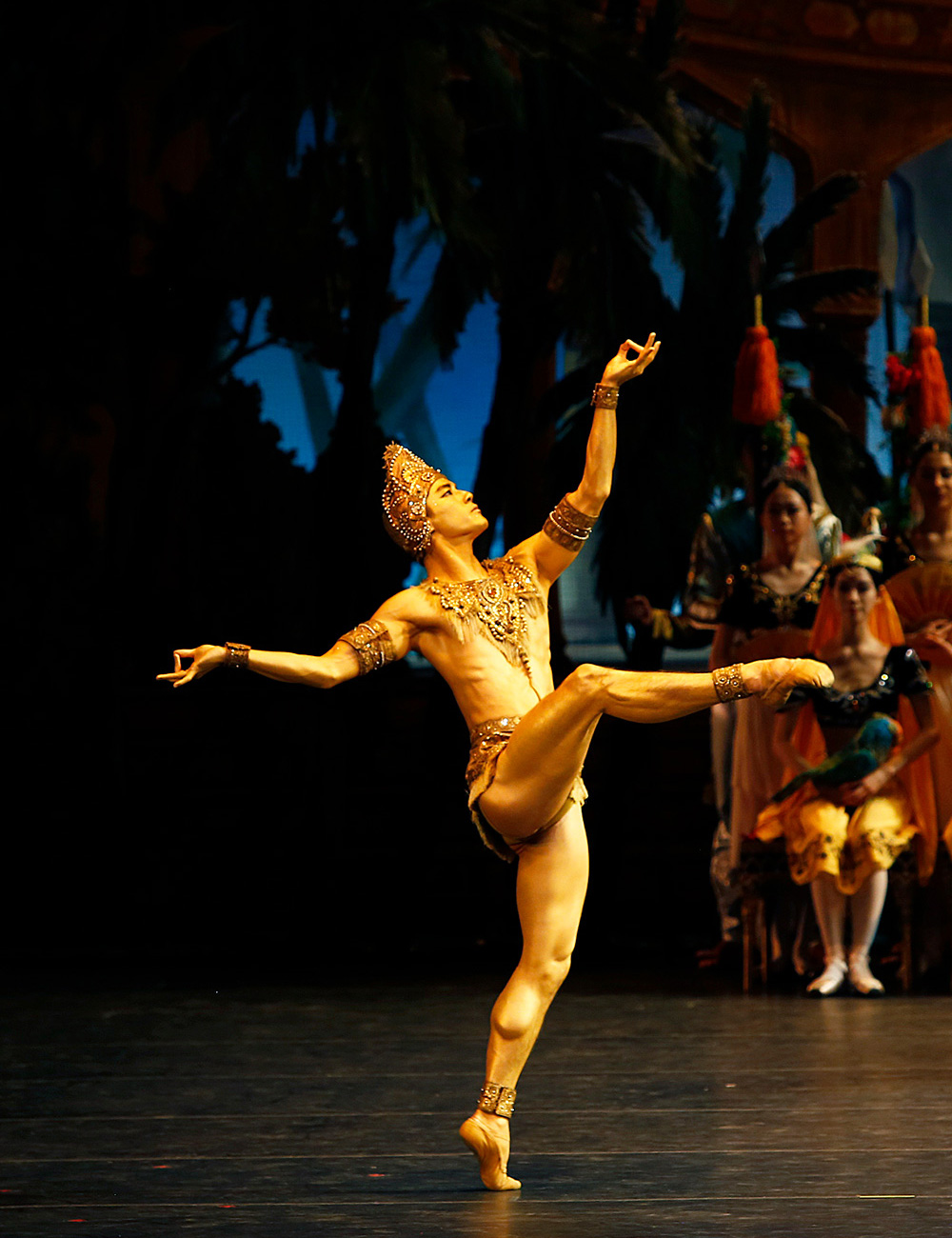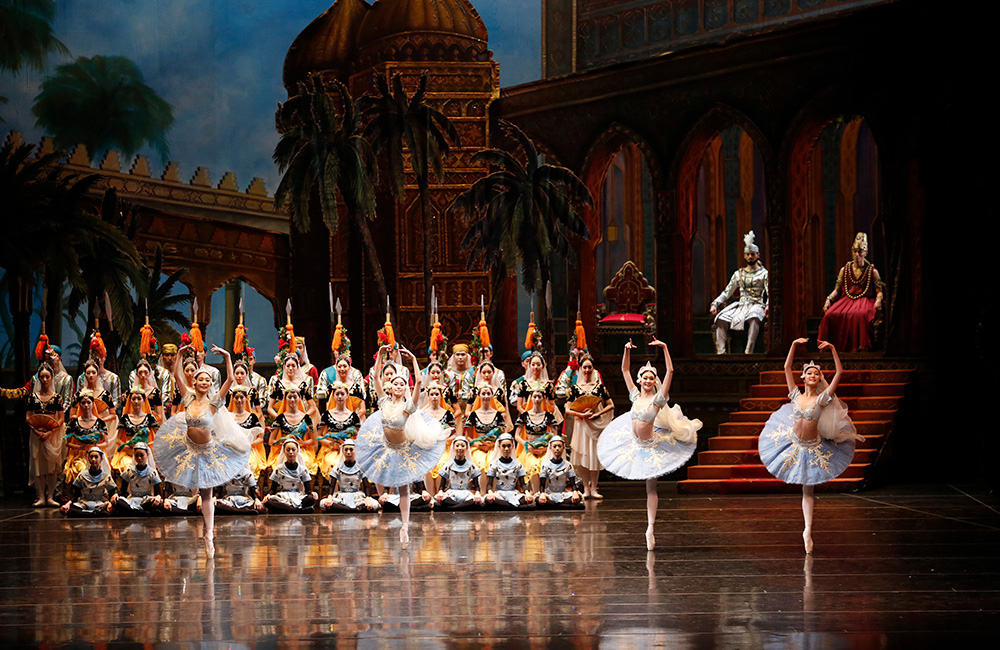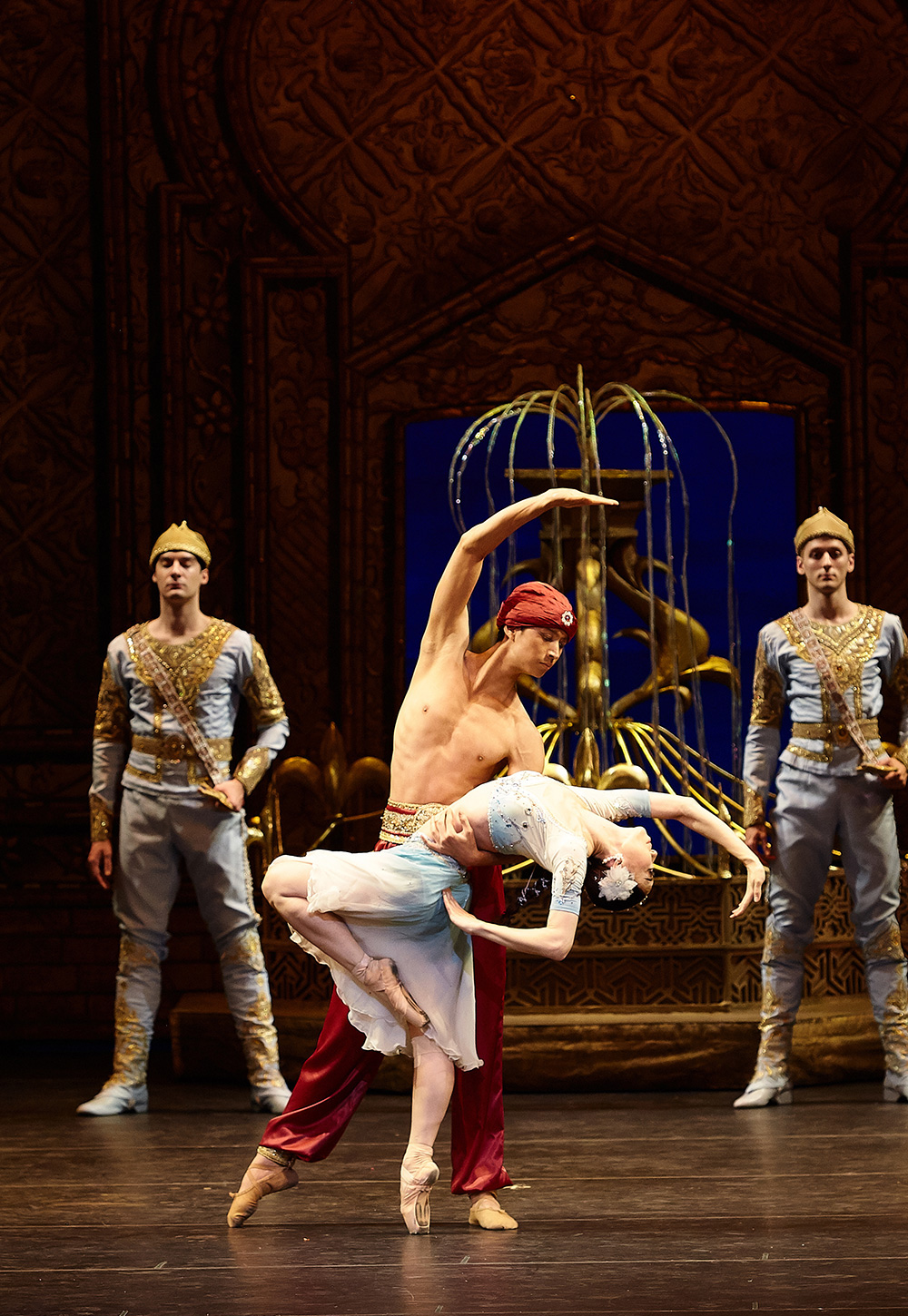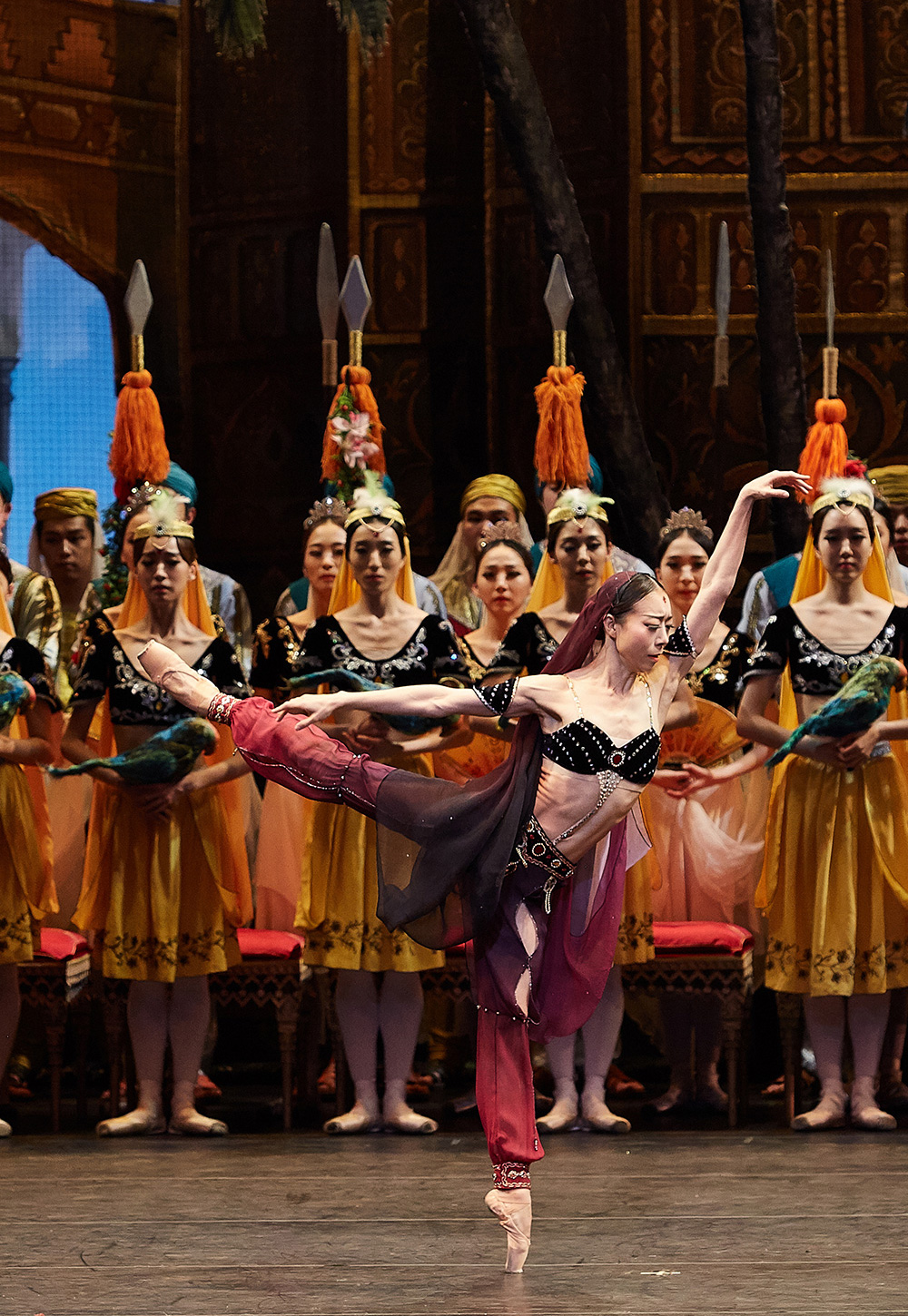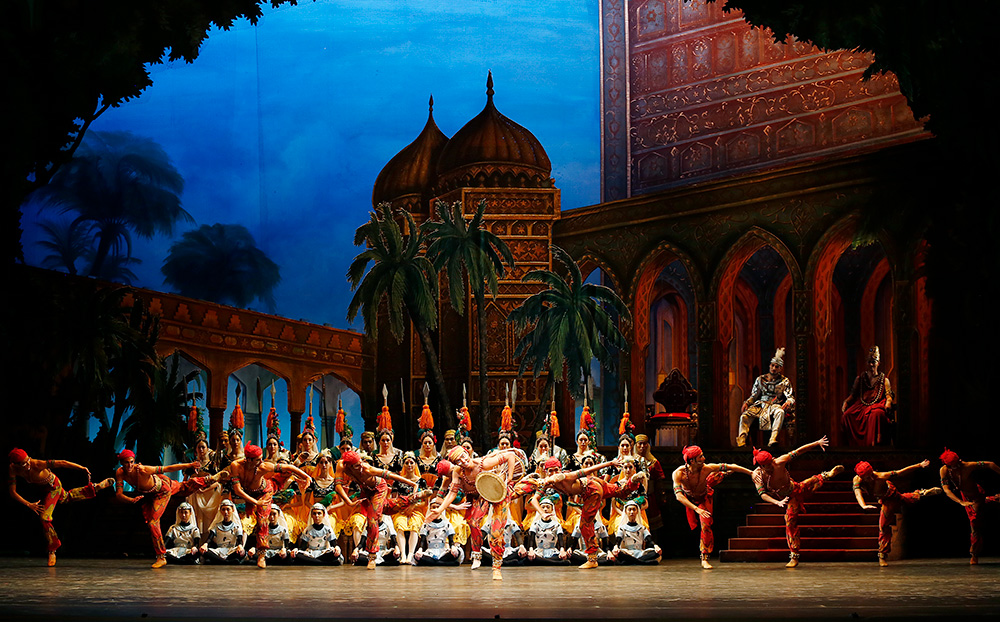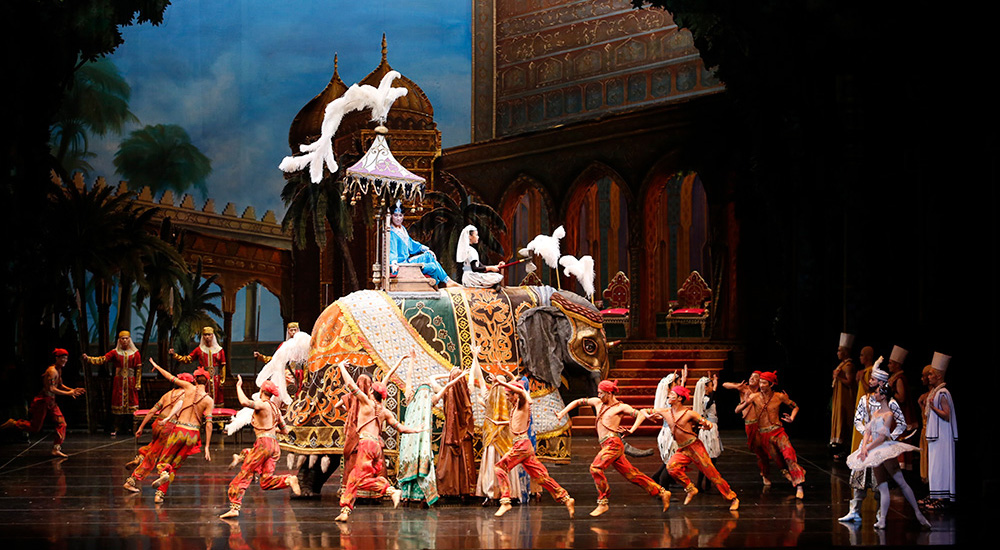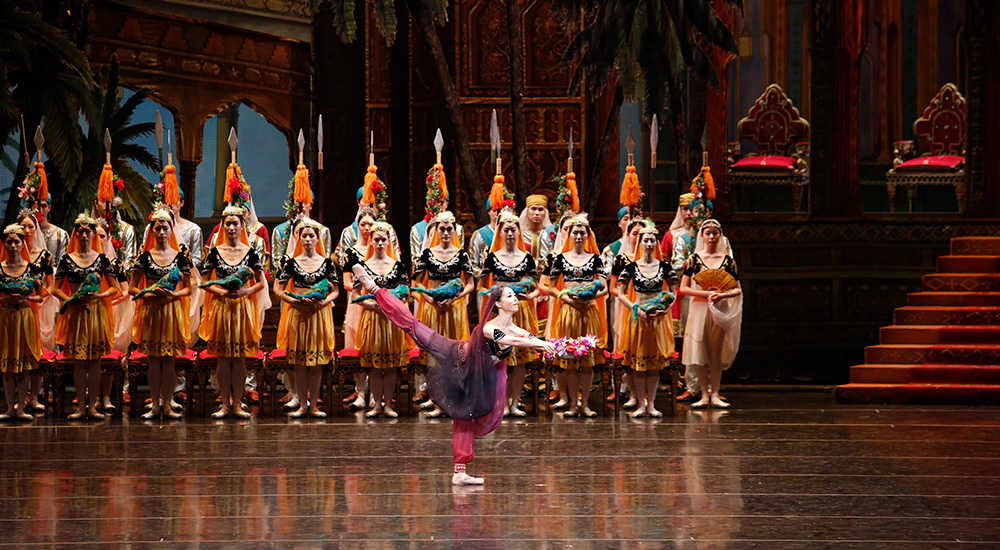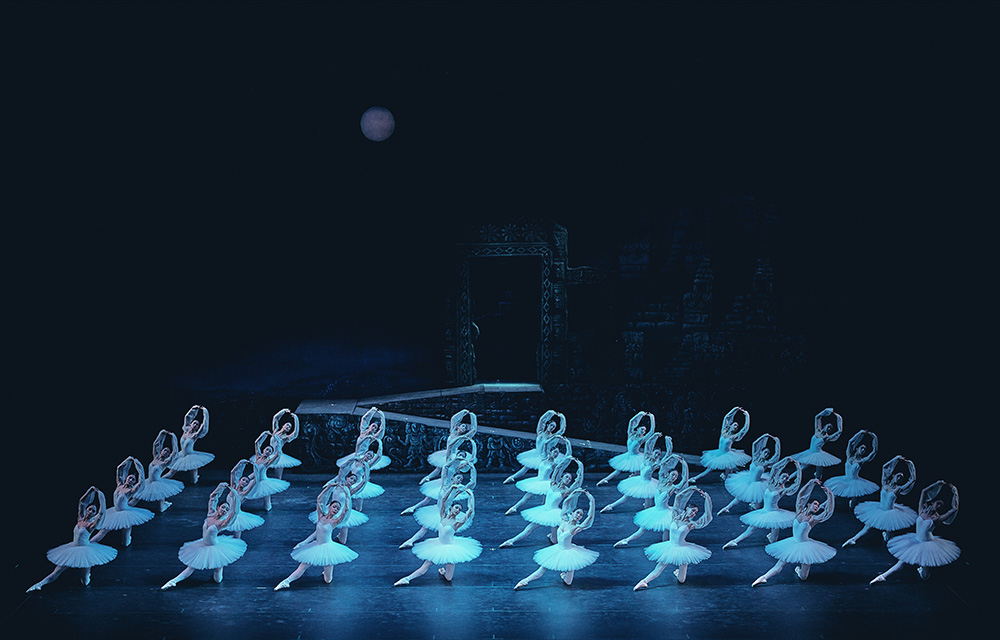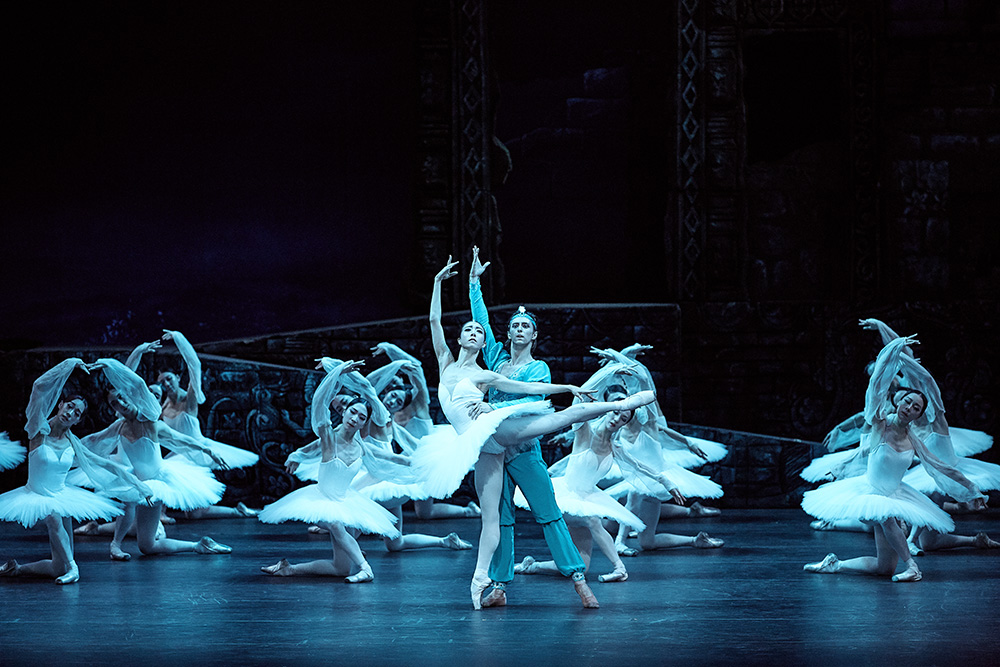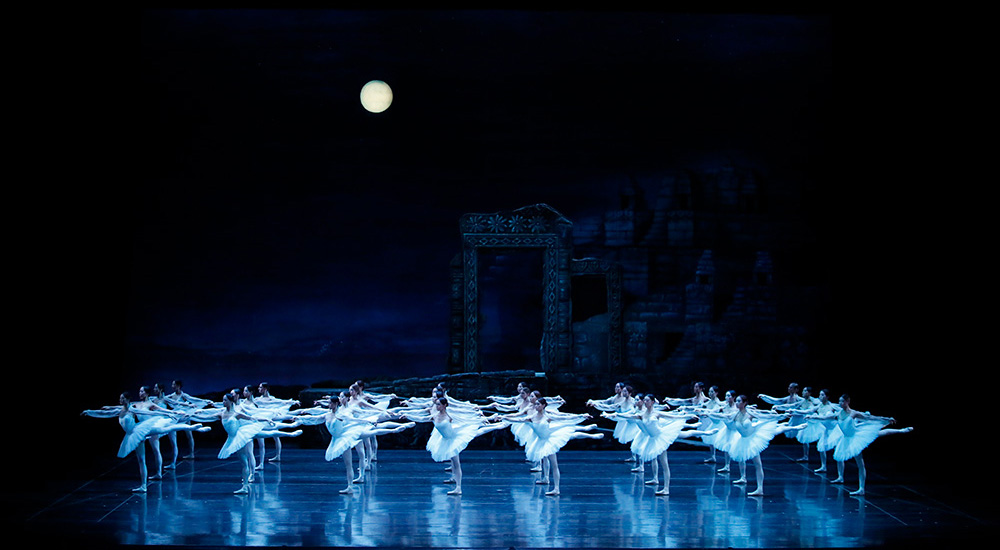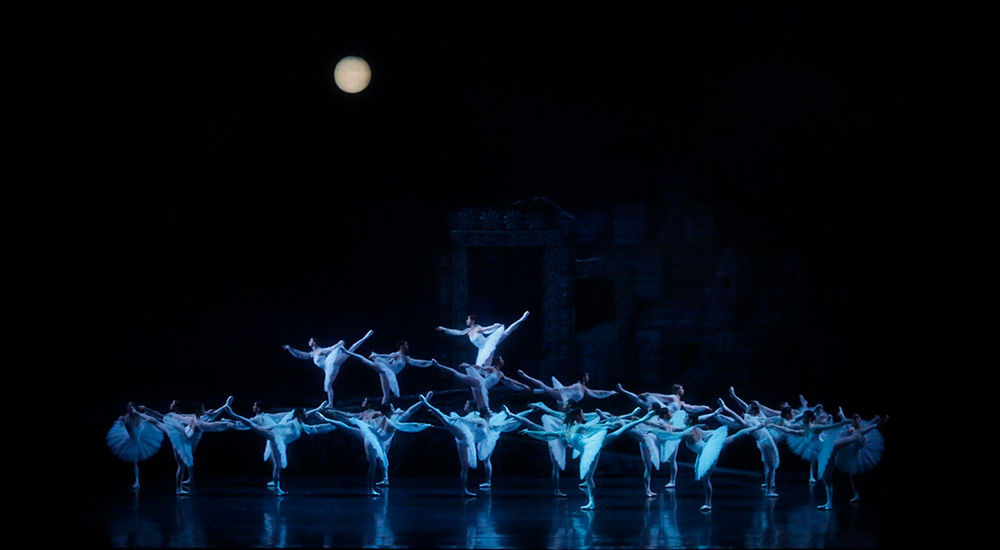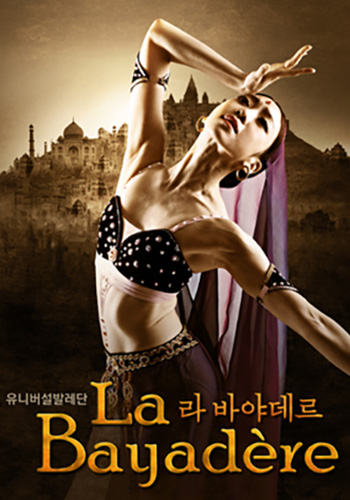La Bayadère
| World Premiere | Bolshoi Ballet at the Bolshoi Theatre, Russia, 1877 |
|---|---|
| Universal Ballet Premiere | The Grand Theater, Sejong Center for the Performing Arts on November 3, 1999 |
| Choreography | Marius Petipa, Vakhtang Chabukiany |
| Additional Choreography | Vakhtang Chabukiany |
| Music | Ludwig Minkus |
| Staging | Oleg Vinogradov, Natalia Spitsyna |
| Set Design | Marianna Zentchenko |
| Costume Design | Marianna Zentchenko |
| Lighting Design | Nakchoen Kang |
| Composition | 5 scenes and 3 acts |
| Running Time | 2 hours 30 minutes |
Many of the great story ballets of Russian tradition are set in Europe. La Bayadère takes place in India, a country known only by legend to most 19th century Europeans. Created by the ballet genius of the age, Marius Petipa, it was first presented by the Imperial Ballet (the predecessor of the Kirov Ballet) at the Maryinsky Theater in 1877, more than 10 years before Sleeping Beauty, Swan Lake or Nutcracker, all of which were also choreographed by Petipa. With a libretto written in collaboration with Sergei Khudekov, the ballet is based on Kalidasa’s Askuntala and the Card of Clay. It is the story a warrior from the noble class, Solor and his
love for Nikia, a Bayadère, or temple dancer at the local Hindu temple.
After Nikia’s death, which is precipitated by Solor’s duplicity – he is engaged to marry the Rajah’s daughter – Solor visits Nikia again in an opium-induced vision. This scene, “The Kingdom of the Shades” contains some of the most masterful of Petipa’s choreography, the structure of which has been imitated and adapted time and time again.
Simple movements are repeated and multiplied as the shades enter-one, then two then three, until 32 ethereal maidens fill the stage, moving in perfect graceful harmony. Against this background of beauty, Solor and Nikia dance their tender pas de deux, with a diaphanous scarf adding to the otherworldly atmosphere. Like many of Petipa’s projects, the ballet has two leading ladies – Nikia and Gamzatti, Solor’s fiancée. The first performance was created for ballerina Vazam, who appreard in the role of Nikia, while the part of Solor was danced by Lev Ivanov, later to choreograph the timeless lakeside scene in Swan Lake which is now considered the trademark of classical ballet.
Over the years, following the general trend in streamlining the great classic ballets to fit the faster pace of today’s audiences, two scenes have been removed from the ballet, reducing it from the original seven scenes in four acts to the version now presented, which contains five scenes in three acts. The wedding scene in ActⅡ is notable for its grand scale, with Solor’s entrance atop an elephant, and dozens of the Rajah’s servants and soldiers in attendance.
First produced for the company’s 15th anniversary in 1999, Universal Ballet’s La Bayadère is the largest production in the company’s repertory. The staging follows that performed by the Kirov Ballet, and was set for the company by Oleg Vinogradov, Kirov Ballet Artistic Director for 23 years, and Natalia Spitsyna. The sets and costumes were designed especially for Universal Ballet’s production by Mariana Zentchenko, a Russian designer now working in France.




